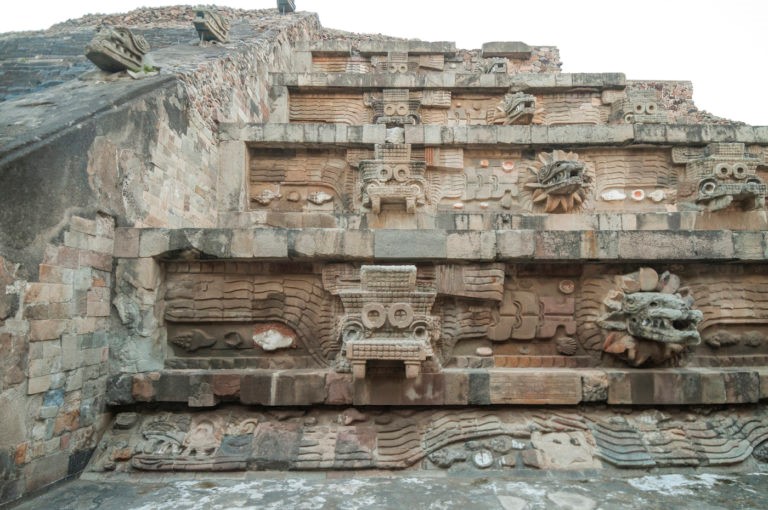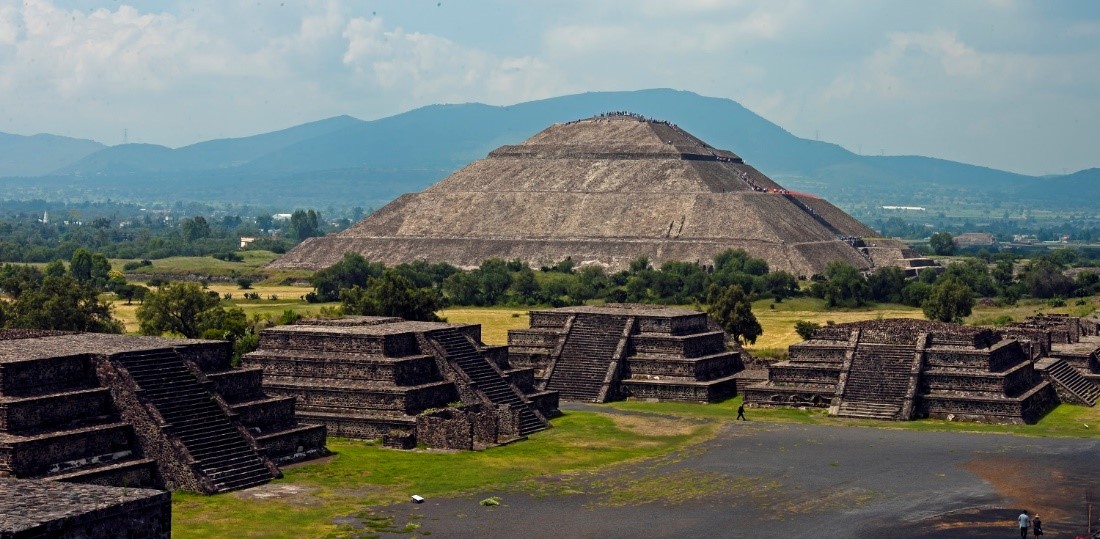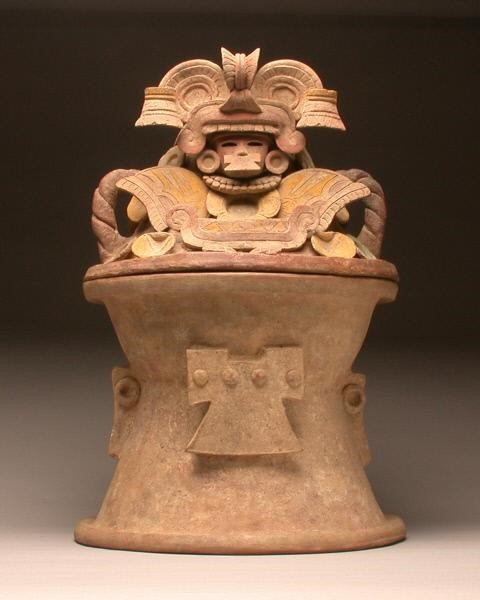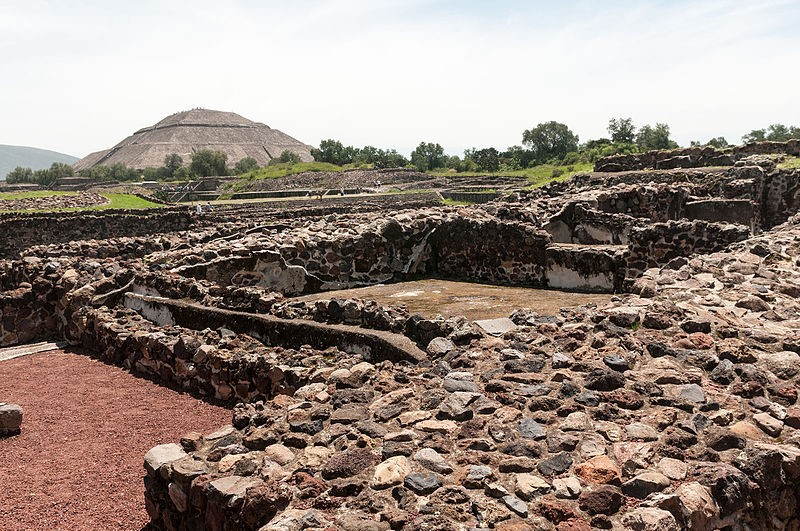Art and identity in the ancient city of Teotihuacan
The city of Teotihuacan was one of the most important urban centers of the ancient Americas. Established in the first century BCE, its population reached over 100,000 at its peak, making it the sixth largest city in the world during its epoch.
What made Teotihuacan particularly interesting was its residents—the city attracted inhabitants from a variety of ethnic and linguistic groups from all over Mesoamerica, who lived in multi-family dwellings similar to apartment buildings found in urban cities today, and worked together to effectively manage the city’s natural resources, trade, and immigration.
The de Young Museum, located in San Francisco, recently showcased never-before-seen archaeological discoveries from the site in the exhibition Teotihuacan: City of Water, City of Fire, exploring the role that art played in binding the diverse population together. We talked to the exhibition curator Matthew Robb, currently Chief Curator of the Fowler Museum at UCLA, for insight into this exemplary city and its inhabitants, architecture, and ceramics.
Teotihuacan was inhabited by a diverse population from all over Mesoamerica. What drew such a variety of people to the city?

I think it was a combination of factors, many similar to the kinds of forces that attract people to cities today. Teotihuacan’s residential compounds are very different from other kinds of domestic housing elsewhere in Mesoamerica—in some respects they may have been seen as better, or more desirable. Although we don’t fully understand how its economy worked, Teotihuacan had lots of jobs for people to do—from farming to obsidian knapping to wall painting to manufacturing sculptures and so on. There were so many different kinds of objects being produced there that it must have been an attractive opportunity for many people. We frame the differences in these forces as pushing or pulling people into the city—some may have fled environmental disasters elsewhere; some may have been seeking these economic opportunities; some may have been drawn by the religious power of its monuments and rituals; some may have been compelled to leave their homes by Teotihuacan military forces; and some may have come just to be a part of a dynamic urban environment. It probably changed over time—successful cities are always seeking new ways to maintain and expand their populations.
What makes the architecture of Teotihuacan so significant?

The most important feature of Teotihuacan architecture is its scale. For instance, the Sun Pyramid is one of the largest structures ever built in the ancient world. Until the advent of the skyscraper in the 19th century, it was one of the tallest buildings in the Western Hemisphere. But aside from the sheer size of its buildings, Teotihuacan architects and urban planners manipulated the scale of the natural environment—the Street of the Dead aligns the Moon Pyramid with Cerro Gordo, a large mountain to the north of the city. As you walk north, the mountain dominates the horizon, but as you get closer to the Moon Pyramid, the building begins to replace the mountain. This is a kind of geomancy—pulling the natural world into the realm of the city. Another important aspect of Teotihuacan architecture is the highly recognizable “talud-tablero” profile on many of the smaller pyramids around the city. In Mesoamerica, architectural profiles functioned much as the “orders” of columns do in western architecture. Teotihuacan was so dominant that when we see its distinctive talud-tablero profile in a far-away place, we typically think it indicates an affiliation with Teotihuacan—actual or aspirational.
What role did art and ceramics play in Teotihuacan?

Everything! It’s important to remember that the category of images and objects we call “art” is a relatively new phenomenon, and that the hierarchies that separate art from other kinds of images and objects are socially determined and can change over time. If we step back and think about the role images and objects played in Teotihuacan, it’s astonishing to realize just how much they permeated the everyday and ceremonial spaces of the city. Not very many people in ancient Mesoamerica woke up and lived their lives in an apartment compound covered with interior wall paintings, but a lot of people in Teotihuacan did. And that’s just the murals—many compounds had small domestic altars, and certain kinds of stone sculptures were pervasive across all social levels. It was a materially and visually rich environment—there are even reduced-scale versions of vessels and objects included in burials. Ceramics often carried imagery that overlapped with the murals; both related to the larger symbolic system represented on the city’s monuments. I think these kinds of objects and images served to integrate the city’s population, providing a common visual language that everyone shared and understood.
In your opinion, what is the most exciting archaeological discovery from Teotihuacan, and why?
That’s a really hard question to answer! What’s so great about this exhibition was that all of the projects that have been working at each of the city’s three main pyramids have been so generous in sharing very recent discoveries. We worked very closely with the Moon Pyramid Project, led by Saburo Sugiyama and Ruben Cabrera, to showcase a spectacular offering form the center of Burial 6—a greenstone mosaic sculpture paired with an obsidian sculpture, surrounded by 18 obsidian blades, some carved in the form of the Feathered Serpent. The archaeologists from the Sun Pyramid project, Alejandro Sarabia (who is also the site Director), and Nelly Zoe Nunez Redon, included a magnificent sculpture of the Old Fire God that they found at the top of the Sun Pyramid. And the Proyecto Tlalocan, headed by Sergio Gómez Chávez, lent two truly amazing greenstone sculptures and a few carved conch shells from the excavations of the tunnel underneath the Ciudadela. In each case, many of us were expecting that the projects might discover a ruler’s tomb, but instead they found these very complex offerings. So in some respects the most exciting discovery is what the archaeologists haven’t found, and how that makes us reconsider our ideas about how Teotihuacan’s government worked.
How much of this ancient city remains today?

It’s important to remember that Teotihuacan was never really abandoned or forgotten. There was a big fire sometime in the second half of the 6th century, but it was really concentrated in the city’s ceremonial core. People kept living in the shadow of the pyramids for centuries, and Teotihuacan accrued a kind of legendary status. In fact, the city’s name and even the names of the Sun and Moon Pyramids as well as the Street of the Dead, all come to us from the Aztecs. They knew Teotihuacan as a ruin in the 14th century, and they revered it—they may have even done their own ‘excavations’ there and taken objects back with them to their own capital, Tenochtitlan. There were other explorations in the 18th and 19th centuries, but it really wasn’t until the early 20th century that archaeology as we recognize it today began. There have been several big, multi-year projects—the first led by Manuel Gamio in the 1920s, a second in the 1960s that consolidated the structures along the Street of the Dead, and another in the 1980s—leading up to the run of projects at the main pyramids as well as some of the residential compounds from the 1990s until now. Even with over a century of archaeology, probably less than 10 percent of the city has been excavated.
Matthew Robb will be highlighting the recent discoveries showcased in the exhibition Teotihuacan: City of Water, City of Fire in our upcoming Gardiner Signature Lecture on April 3. Reserve your spot to learn more about this remarkable ancient city, and see some ceramics from Teotihucan in our collection here!
[1] Teotihuacan. Photo: Rene Trohs via Wikimedia Commons [2] Facade of the Feathered Serpent Pyramid, assembled as a mosaic of large and small sculptures. Photograph by Jorge Pérez de Lara Elías, © INAH. Image courtesy of the FAMSF. [3] Pyramid of the Sun from Pyramid of the Moon, Teotihuacan. Photo: Daniel Case via Wikimedia Commons [4] Covered Censer with Butterfly-masked Warrior Lid, 450-650, Mexico, Mexico, Teotihuacan, Gift of George and Helen Gardiner [5] Teotihuacan, 2015. Photo: Ralf Roletschek via Wikimedia Commons